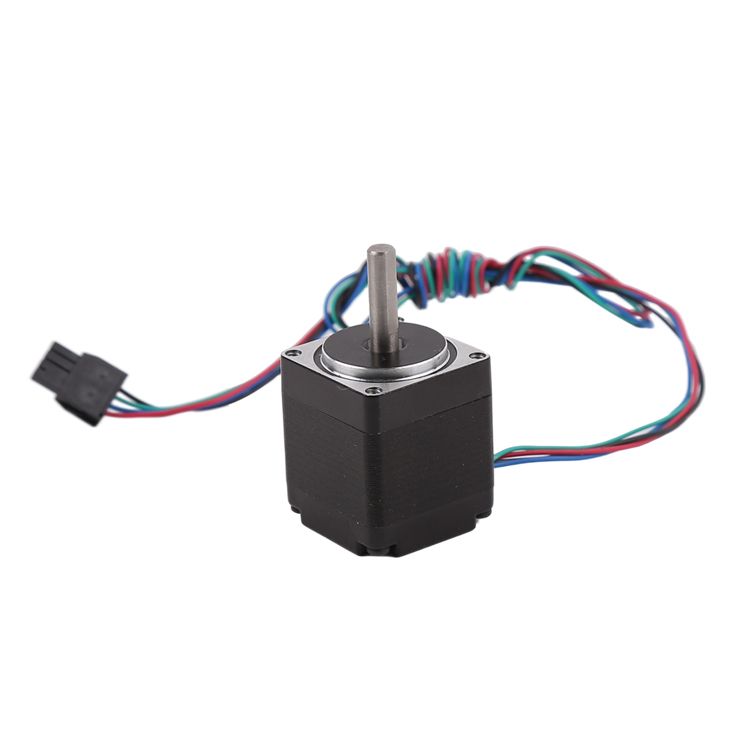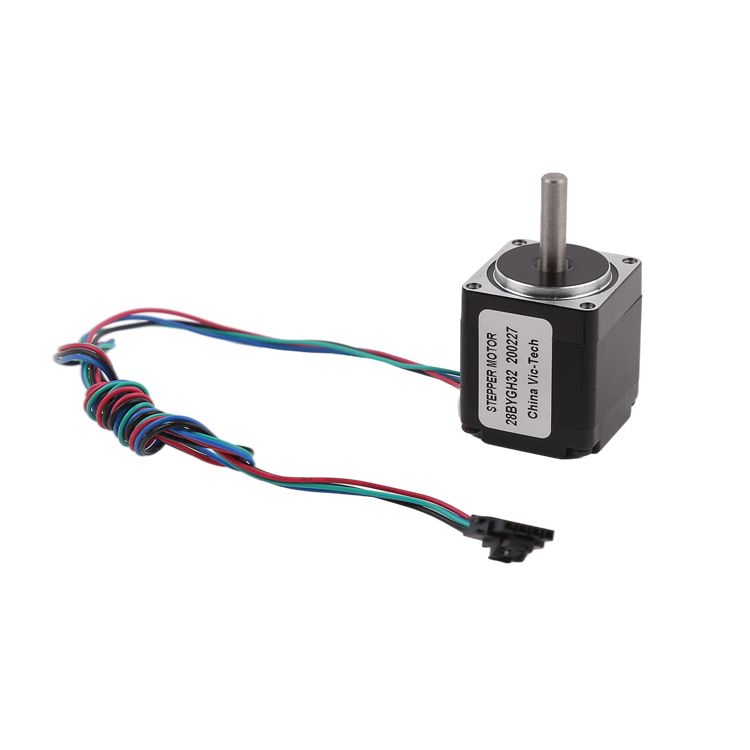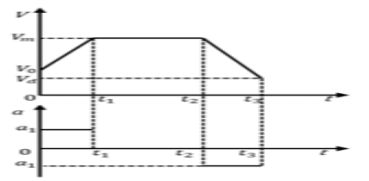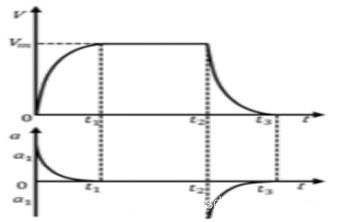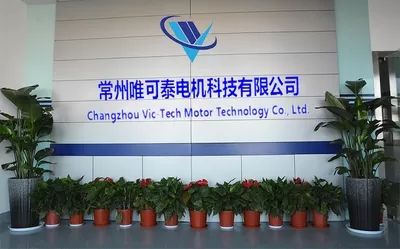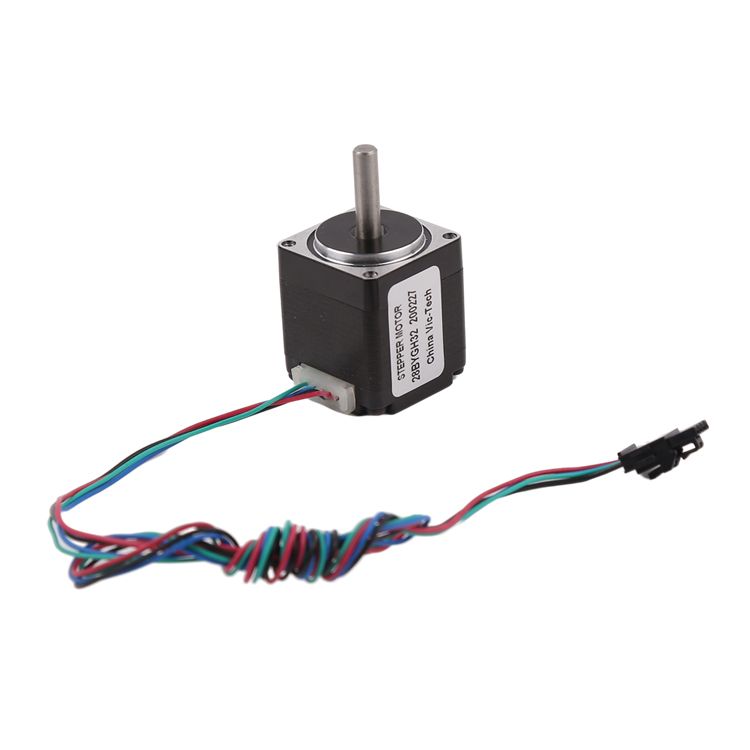
Stepper motor working principle
Normally, the rotor of a motor is a permanent magnet. When current flows through the stator winding, the stator winding produces a vector magnetic field. This magnetic field drives the rotor to rotate by an angle so that the direction of the rotor's pair of magnetic fields coincides with that of the stator's field. When the vector magnetic field of the stator rotates by an angle.
Stepper motor is a kind of induction motor, its working principle is the use of electronic circuit, the direct current into a time-sharing power supply, multiphase timing control current, with this current for stepper motor power supply, stepper motor can work properly, the driver is for stepper motor time-sharing power supply, multiphase timing controller.
Each input an electrical pulse, the motor rotates an angle forward one step. Its output angular displacement is proportional to the number of pulses input, speed is proportional to the pulse frequency. Change the order of winding energization, the motor will reverse. So you can control the number of pulses, frequency and the order of energizing each phase of the motor winding to control the rotation of the stepper motor.
The accuracy of the general stepper motor is 3-5% of the stepping angle, and it does not accumulate.
The torque of a stepper motor will decrease as the speed increases. As the stepper motor rotates, the inductance of each phase of the motor winding will form a reverse electric potential; the higher the frequency, the greater the reverse electric potential. Under its action, the motor with the frequency (or speed) increases and the phase current decreases, which leads to a decrease in torque.
Stepper motor can operate normally at low speed, but if higher than a certain speed will not start, and accompanied by whistling sound.
Stepper motor has a technical parameter: no-load start frequency, that is, the stepper motor in the case of no-load pulse frequency can be started normally, if the pulse frequency is higher than the value, the motor can not start normally, may occur out of step or blocking.
In the case of a load, the starting frequency should be lower. If the motor is to achieve high speed rotation, the pulse frequency should have an acceleration process, i.e., the starting frequency is lower, and then rises to the desired high frequency (motor speed from low speed to high speed) at a certain acceleration.
Why do stepper motors need to be controlled with speed reduction
The speed of a stepper motor depends on the pulse frequency, the number of rotor teeth and the number of beats. Its angular speed is proportional to the pulse frequency and is synchronized in time with the pulse. Thus, if the number of rotor teeth and the number of running beats are certain, the desired speed can be obtained by controlling the pulse frequency. Since the stepper motor is started with the help of its synchronous torque, the starting frequency is not high in order not to lose step. Especially as the power increases, the rotor diameter increases, the inertia increases, and the starting frequency and the maximum running frequency may differ by as much as ten times.
The starting frequency characteristics of the stepper motor so that the stepper motor start can not directly reach the operating frequency, but to have a start-up process, that is, from a low speed gradually ramp up to the operating speed. Stop when the operating frequency can not immediately drop to zero, but to have a high-speed gradual speed reduction to zero process.
Therefore, the operation of the stepper motor generally has to go through the acceleration, uniform speed, deceleration three stages, the acceleration and deceleration process as short as possible, the constant speed time as long as possible. Especially in the work requiring fast response, the time required to run from the starting point to the end is the shortest, which must require the shortest process of acceleration and deceleration, and the highest speed at constant speed.
Acceleration and deceleration algorithm is one of the key technologies in motion control, and one of the key factors to achieve high speed and high efficiency. In industrial control, on the one hand, the process of processing is required to be smooth and stable, with small flexibility impact; on the other hand, it requires fast response time and quick reaction. In the premise of ensuring control accuracy to improve processing efficiency, to achieve smooth and stable mechanical motion, is the current industrial processing has been to solve the key problem. The acceleration and deceleration algorithms commonly used in current motion control systems mainly include: trapezoidal curve acceleration and deceleration, exponential curve acceleration and deceleration, S-shaped curve acceleration and deceleration, parabolic curve acceleration and deceleration, etc.
Trapezoidal curve acceleration and deceleration
Definition: Acceleration/deceleration in a linear manner (acceleration/deceleration from the start speed to the target speed) with a certain ratio
Calculation formula: v(t)=Vo+at
Advantages and disadvantages: Trapezoidal curve is characterized by simple algorithm, less time consuming, fast response, high efficiency and easy implementation. However, the uniform acceleration and deceleration stages do not conform to the stepper motor speed change law, and the transition point between variable speed and uniform speed cannot be smooth. Therefore, this algorithm is mainly used in applications where the requirements for the acceleration and deceleration process are not high.
Exponential curve acceleration and deceleration
Definition: It means acceleration and deceleration by exponential function.
Acceleration and deceleration control evaluation index:
1、Machine trajectory and position error should be as small as possible
2、Machine motion process is smooth, jitter is small, and the response is fast
3, acceleration and deceleration algorithm should be as simple as possible, easy to implement, and can meet the real-time control requirements
If you want to communicate and cooperate with us, please feel free to contact us.
We interact closely with our customers, listen to their needs and act on their requests. We believe that a win-win partnership is based on product quality and customer service.
Changzhou Vic-tech Motor Technology Co., Ltd. is a professional research and production organization focusing on motor research and development, overall solutions for motor applications, and processing and production of motor products. Ltd. has been specialized in manufacturing micro motors and accessories since 2011. Our main products: miniature stepper motors, gear motors, geared motors, underwater thrusters and motor drivers and controllers.
Our team has over 20 years of experience in designing, developing and manufacturing micro-motors, and can develop products and assist design customers according to special needs! At present, we mainly sell to customers in hundreds of countries in Asia, North America and Europe, such as USA, UK, Korea, Germany, Canada, Spain, etc. Our "integrity and reliability, quality-oriented" business philosophy, "customer first" value norms advocate performance-oriented innovation, collaboration, efficient spirit of enterprise, to establish a "build and share "The ultimate goal is to create maximum value for our customers.
Post time: Jun-27-2023

